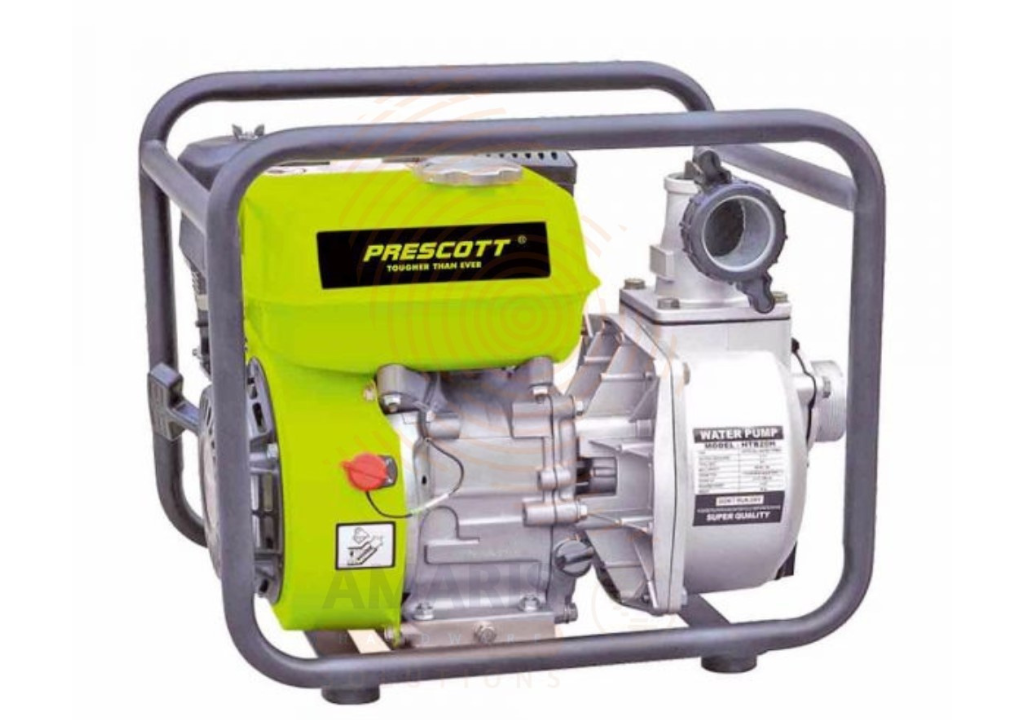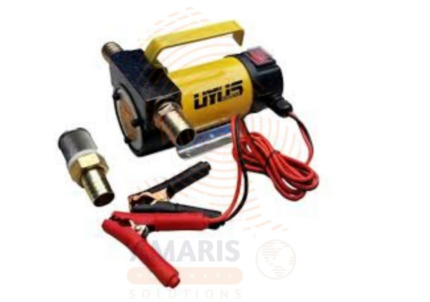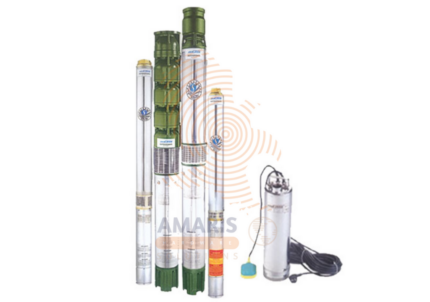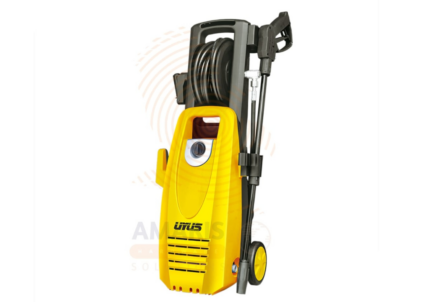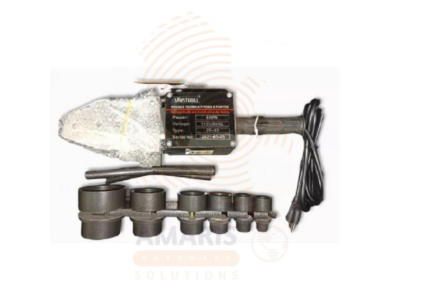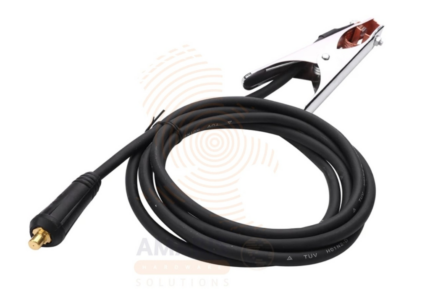
Gasoline Water Pump
$138.46 Original price was: $138.46.$131.54Current price is: $131.54.
A Gasoline Water Pump with a 7.0 HP (horsepower) 208 CC (cubic centimeters) engine is a mechanical device designed to transfer water by utilizing a gasoline-powered internal combustion engine. The 7.0 HP rating indicates the power of the engine, while the 208 CC represents the engine displacement, reflecting the size and potential performance of the engine.
This type of water pump is commonly used for various applications, such as draining flooded areas, transferring water between locations, and providing water for irrigation. It typically features suction and discharge ports for connecting hoses or pipes, a fuel tank for gasoline storage, and a start mechanism, which can be either electric or manual.
Key considerations for such a pump include its flow rate (measured in gallons or liters per minute), the size of suction and discharge ports, fuel capacity for runtime, and maintenance requirements. These pumps are valued for their versatility and portability, making them suitable for a range of tasks in agricultural, construction, and emergency situations.
Table of Contents
ToggleGasoline Water Pump
Uses
-
Irrigation: Gasoline water pumps are frequently employed for agricultural purposes to irrigate fields and crops. They can efficiently move water from a water source, such as a pond or well, to the irrigation system.
-
Construction Sites: These pumps are valuable on construction sites for dewatering excavations, trenches, or flooded areas. They help maintain a dry work environment, enabling construction activities to proceed smoothly.
-
Flood Control: In the event of flooding, gasoline water pumps are utilized to remove excess water from affected areas, helping to prevent or minimize damage to property and infrastructure.
-
Emergency Water Supply: Gasoline water pumps can serve as a temporary solution for providing water in emergency situations, such as when regular water supplies are disrupted due to natural disasters or infrastructure issues.
-
Water Transfer: They can be used to transfer water from one location to another, such as filling or emptying water tanks, ponds, or swimming pools.
-
Firefighting Support: In some cases, portable water pumps are used to provide water for firefighting efforts in areas where a dedicated water supply may be limited.
-
Pond and Pool Maintenance: These pumps can be employed for routine maintenance tasks, such as draining or filling ponds, pools, or other water features.
-
Remote Water Access: In locations without access to electricity, gasoline water pumps offer a portable and independent solution for water transfer and management.
-
Mobile Water Supply: Their portability makes them suitable for situations where a mobile water supply is required, such as in remote agricultural fields or temporary work sites.
-
Fountain Operation: Gasoline water pumps can be used to power fountains or decorative water features, adding aesthetic value to gardens, parks, or public spaces.
Safety Precautions
-
Wear Personal Protective Equipment (PPE):
-
Safety glasses to protect eyes from debris or splashes
-
Hearing protection due to engine noise
-
Gloves to protect hands from fuel, hot surfaces, and sharp edges
-
Respiratory mask if working in enclosed or poorly ventilated areas to avoid inhaling exhaust fumes
-
-
Operate in a Well-Ventilated Area:
-
Use the pump outdoors or in a space with adequate ventilation to prevent buildup of harmful exhaust gases
-
Avoid running the engine in enclosed spaces to prevent carbon monoxide poisoning
-
-
Fuel Handling and Storage:
-
Use the correct type of fuel as specified by the manufacturer
-
Store fuel in approved containers away from heat sources or flames
-
Refuel the pump only when the engine is off and cooled down to prevent fire hazards
-
Avoid spilling fuel and clean up any spills immediately
-
-
Inspect Equipment Before Use:
-
Check hoses, clamps, and connections for leaks or damage
-
Inspect the pump body and engine for cracks, loose parts, or wear
-
Ensure the fuel cap is secure and venting properly
-
-
Safe Operation:
-
Place the pump on a stable, level surface before starting
-
Do not overload the pump beyond its capacity
-
Keep hands, clothing, and tools away from moving parts
-
Avoid running the pump dry to prevent damage
-
Keep bystanders, especially children and pets, away from the operating area
-
-
Engine and Pump Maintenance:
-
Follow manufacturer’s maintenance schedule for oil changes, air filter cleaning, and spark plug inspection
-
Allow the engine and pump to cool before performing maintenance or storage
-
Disconnect the spark plug wire before servicing to prevent accidental starts
-
-
Emergency Preparedness:
-
Have a fire extinguisher nearby when operating the pump
-
Know how to quickly shut off the engine in case of emergency
-
Be familiar with first aid procedures in case of fuel exposure, burns, or injuries
-


 Acrylic Sealants
Acrylic Sealants Construction Adhesives
Construction Adhesives Double-Sided Tape
Double-Sided Tape Duct Tape
Duct Tape Electrical Tape
Electrical Tape Epoxy & Resins
Epoxy & Resins Masking Tape
Masking Tape
 Automotive Wrenches & Socket Sets
Automotive Wrenches & Socket Sets Battery Chargers & Jump Starters
Battery Chargers & Jump Starters Car Jacks & Stands
Car Jacks & Stands Car Wash & Detailing Products
Car Wash & Detailing Products Diagnostic Tools
Diagnostic Tools Tire Inflators
Tire Inflators Vehicle Lighting
Vehicle Lighting Oil & Lubricants
Oil & Lubricants
 Adhesives & Sealants
Adhesives & Sealants Bricks & Blocks
Bricks & Blocks Cement & Concrete
Cement & Concrete Drywall & Plaster
Drywall & Plaster Flooring (Tiles, Wood, Laminate)
Flooring (Tiles, Wood, Laminate) Lumber & Plywood
Lumber & Plywood Paints, Primers & Coatings
Paints, Primers & Coatings Insulation Materials
Insulation Materials Roofing Materials
Roofing Materials
 Circuit Breakers
Circuit Breakers Electrical Cables & Wires
Electrical Cables & Wires Switches & Sockets
Switches & Sockets Fuses & Relays
Fuses & Relays Connectors & Terminals
Connectors & Terminals Electrical Boxes & Panels
Electrical Boxes & Panels Conduit & Fittings
Conduit & Fittings Lighting Fixtures & Bulbs
Lighting Fixtures & Bulbs Extension Cords & Power Strips
Extension Cords & Power Strips
 Anchors
Anchors Bolts
Bolts Clips & Clamps
Clips & Clamps Screws
Screws Nuts
Nuts Washers
Washers Rivets
Rivets Nails
Nails Threaded Rods
Threaded Rods
 Hammers
Hammers Measuring Tools (Tapes, Levels, Calipers)
Measuring Tools (Tapes, Levels, Calipers) Screwdrivers
Screwdrivers Pliers & Cutters
Pliers & Cutters Saws & Blades
Saws & Blades Chisels & Punches
Chisels & Punches Allen Keys & Hex Keys
Allen Keys & Hex Keys Ratchets & Socket Sets
Ratchets & Socket Sets Wrenches & Spanners
Wrenches & Spanners
 Power Tool Accessories (Blades, Bits, Discs)
Power Tool Accessories (Blades, Bits, Discs) Rotary Tools
Rotary Tools Saws (Circular, Jigsaw, Reciprocating)
Saws (Circular, Jigsaw, Reciprocating) Drills & Drivers
Drills & Drivers Grinders & Sanders
Grinders & Sanders Heat Guns
Heat Guns Nail Guns
Nail Guns Impact Wrenches
Impact Wrenches Batteries & Chargers
Batteries & Chargers
 Pipes & Fittings (PVC, Copper, PEX)
Pipes & Fittings (PVC, Copper, PEX) Plumbing Tools
Plumbing Tools Pumps & Motors
Pumps & Motors Sealants & Adhesives for Plumbing
Sealants & Adhesives for Plumbing Valves & Taps
Valves & Taps Water Heaters
Water Heaters Drainage Systems
Drainage Systems Faucets & Fixtures
Faucets & Fixtures Hoses & Tubing
Hoses & Tubing
 Hinges & Latches
Hinges & Latches Hooks & Brackets
Hooks & Brackets Window Hardware
Window Hardware Chains & Cables
Chains & Cables Casters & Wheels
Casters & Wheels Shelving & Storage Systems
Shelving & Storage Systems Door Handles & Locks
Door Handles & Locks Drawer Slides & Cabinet Hardware
Drawer Slides & Cabinet Hardware
 Personal Protective Equipment (PPE)
Personal Protective Equipment (PPE) Respirators & Masks
Respirators & Masks Safety Glasses
Safety Glasses Safes
Safes Security Cameras
Security Cameras Gloves
Gloves Helmets
Helmets Ear Protection
Ear Protection Fire Safety Equipment
Fire Safety Equipment Locks & Padlocks
Locks & Padlocks Motion Sensors & Alarms
Motion Sensors & Alarms
 Garden Fencing
Garden Fencing Garden Furniture Hardware
Garden Furniture Hardware Lawn Mowers
Lawn Mowers Trimmers & Edgers
Trimmers & Edgers Shovels & Spades
Shovels & Spades Rakes & Hoes
Rakes & Hoes Pruning Shears & Loppers
Pruning Shears & Loppers Watering Systems (Hoses, Sprinklers, Nozzles)
Watering Systems (Hoses, Sprinklers, Nozzles)
 Interior Paints
Interior Paints Paint Brushes & Rollers
Paint Brushes & Rollers Paint Strippers & Thinners
Paint Strippers & Thinners Paint Trays & Accessories
Paint Trays & Accessories Exterior Paints
Exterior Paints Spray Paints
Spray Paints Primers & Undercoats
Primers & Undercoats Varnishes & Stains
Varnishes & Stains
 Gaskets & Seals
Gaskets & Seals Hydraulic Fittings
Hydraulic Fittings Industrial Fasteners
Industrial Fasteners Industrial Hoses
Industrial Hoses Lubricants & Greases
Lubricants & Greases Metal Sheets & Bars
Metal Sheets & Bars Bearings & Bushings
Bearings & Bushings Belts & Pulleys
Belts & Pulleys
 HVAC Filters
HVAC Filters Insulation for HVAC
Insulation for HVAC Air Conditioners
Air Conditioners Refrigerants
Refrigerants Ventilation Ducts & Fittings
Ventilation Ducts & Fittings Thermostats & Controllers
Thermostats & Controllers Fans & Blowers
Fans & Blowers
 Pegboards & Hooks
Pegboards & Hooks Shelving Units
Shelving Units Storage Bins & Containers
Storage Bins & Containers Toolboxes & Tool Chests
Toolboxes & Tool Chests Workbenches
Workbenches Drawer Organizers
Drawer Organizers Labeling Supplies
Labeling Supplies
 Welding Accessories (Clamps, Brushes)
Welding Accessories (Clamps, Brushes) Welding Electrodes & Rods
Welding Electrodes & Rods Welding Helmets & Gloves
Welding Helmets & Gloves Welding Machines
Welding Machines Soldering Irons & Stations
Soldering Irons & Stations Flux & Solder Wire
Flux & Solder Wire
 Generator Accessories
Generator Accessories Inverters
Inverters Portable Generators
Portable Generators Power Inverters
Power Inverters Transfer Switches
Transfer Switches Diesel & Gasoline Generators
Diesel & Gasoline Generators
 Transport Equipment: Carts, Dollies, and Hand Trucks
Transport Equipment: Carts, Dollies, and Hand Trucks Storage Solutions: Pallets, Racks, and Containers
Storage Solutions: Pallets, Racks, and Containers Lifting Equipment: Hoists, Cranes, and Jacks
Lifting Equipment: Hoists, Cranes, and Jacks Conveyors and Accessories: Belts and Rollers
Conveyors and Accessories: Belts and Rollers